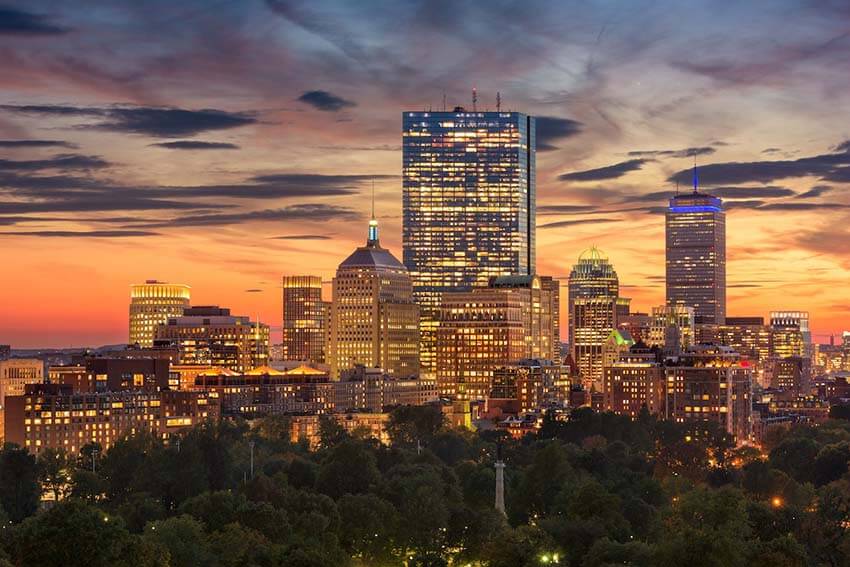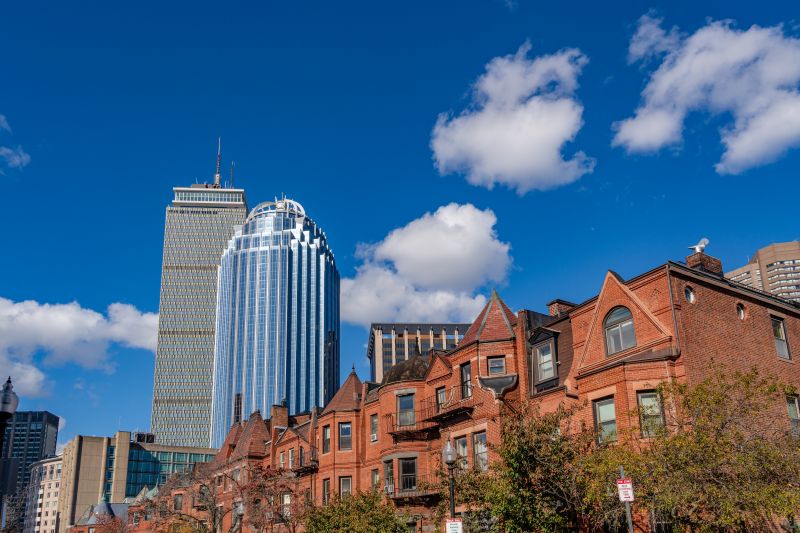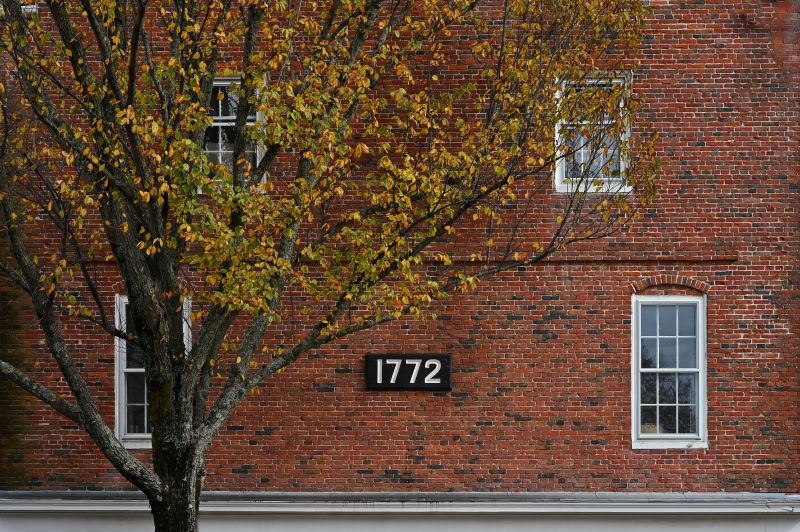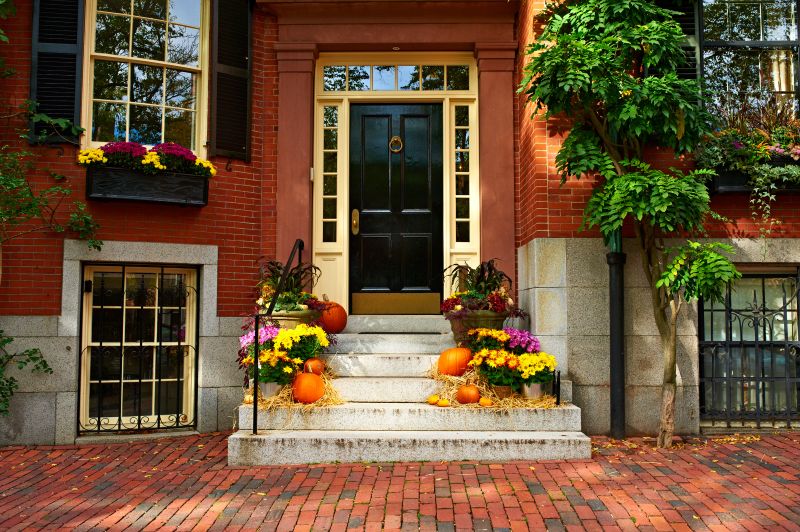
***UPDATED*** This market report has been updated, check out our 2023 Boston Apartment Rental Market Report!
Two years ago, we released the most comprehensive apartment rental market report in Greater Boston. It featured an interactive map showing vacancy rates, average rent prices, and area statistics for all surrounding neighborhoods.
Two years later, our database of Boston apartments has grown larger, our network has grown wider, and our knowledge and understanding of the market has grown deeper.
Boston Pads Apartment Data – Our Breadth and Scope:
| Total Apartments Non Luxury | Total Available Apartments Non Luxury | Real Time Availability Rate | Total Vacant Apartments | Total Vacant Non-Luxury |
|---|---|---|---|---|
| 70,053 | 2,537 | 3.62% | 1,338 | 506 |
<tbody
| Total Galleries | Total Pictures | Total Videos |
|---|---|---|
| 53,761 | 687,387 | 9,660 |
As the leader in local Boston apartment data, we’re committed to providing the best resources for: landlords, renters, buyers and sellers. We can help everyone make better decisions on their real estate needs based on facts, and less on guesswork or speculation. We decided to go big in 2019 and provide more data points than ever on our rental market report.
We’ve officially brought our data to life by building a framework to display real-time apartment statistics for all neighborhoods in Boston, live on Boston Pads.
View our Live Apartment Data Widgets below the listings on our apartments for rent page.
These data tables will appear throughout our content and listing pages. Our real time widgets will provide users access to data points and insights usually reserved for the landlords in our network, renters we help place in apartments, and buyers and sellers of properties. In essence, everyone will be able to access the research and data points we provide.
Now you can compare entire areas and even micro neighborhoods in terms of average rent prices, vacancy rates, availability rates, historical trends, and much more.
To celebrate the release of our new data feed, we’ve brought back our interactive average rent map with updated statistics, a preview to some of the data widgets being released, and a full report on the current rental market in peak rental season which is historically Mid to Late July.
Current Boston Apartment Rental Market Report
A lot can happen in two years. In the past we have seen how swiftly the rental market can move during tumultuous times. But when times are glorious, the championship parades can seem endless.
The apartment rental market is incredibly strong. However, our rental market report indicates it may be showing some signs of slowing. Vacancy and Availability Rates are still at near historic lows and rent prices are up 5-13% on average for nearly all neighborhoods, but the Real-time Availability Rate (RTAR) is 21.14% higher than it was two years ago. We’ve seen a few pockets of weakness in some areas, which we will address separately in another article.
Greater Boston has been experiencing historically low unemployment rates combined with higher wages, salaries and bonuses. This added capital has pushed demand for updated apartments and new construction. Regardless of location, older outdated apartments with poor layouts and cheaper finishes are the only properties that are staying on the market for extended periods of time. We are also noticing a greater interest and adoption in quick improvements in fit and finishes across the board.
| July 2017 | July 2019 | % Change | |
|---|---|---|---|
| Real-Time Vacancy-Rate | 2.91% | 3.69% | 21.14% |
| Average 1 Bedroom Apartment | $1,938 | $2,068 | 6.29% |
| Average 2 Bedroom Apartment | $2,439 | $2,594 | 5.98% |
Apartment Availability vs. Vacancy in Boston
One key difference in how we report data now compared to 2017 is the separation of vacancy rate and availability rate. In 2017, we defined Real-Time Vacancy rate as all apartments currently available plus all of those becoming available in the future, divided by the total number of apartments.
Now we’re separating those that are currently vacant into their own statistic, the true Real-Time Vacancy Rate. So Real-time vacancy rate is percentage of apartments that are vacant now and available for immediate move in.
| REAL TIME VACANCY RATE | = | Total Apartments Currently Vacant |
| Total Apartments in Database |
Real-time availability rate is calculated using the same calculation used in the 2017 release of the interactive map. It is the % of apartments in our database that are currently vacant plus all the apartments that are becoming available in the future with a set date of availability.
| REAL TIME AVAILABILITY RATE | = | (Total Apartments Currently Vacant + Apartments Set to Become Available on a Later Day) |
| Total Apartments in Database |
While the Real-time Vacancy Rate (RTVR) is a great indicator of current market accessibility and overall scarcity, the Real-time Availability Rate (RTAR) can be a great indicator future market trends. If lower than average Vacancy Rate is coupled with a very low Availability Rate, it suggests a very strong market with no sign of letting up.
Availability rate is the calculation of all currently vacant apartments plus units becoming available in the future divided by the total number of apartments in that area. The nationwide average availability rate is around 6.6% for apartments, which is considered healthy. Boston is at a staggering 4.19% as of July 24, well below the nation’s average. In fact, out of the 30 Greater Boston neighborhoods in our local database, 24 of them have a availability rate below 5%.
Rental Market Report Shows Strength
This should come as no surprise to most local residents and real estate aficionados. While some of the nation’s cities are losing residents, Boston remains a stalwart in growth and real estate market strength. As the city adds more and more residents every year, Mayor Marty Walsh and surrounding policy makers continue to try to feed the demand with new housing inventory while new apartment buildings break ground seemingly every week.
There are some Anti-Development Neighborhood groups and other policy makers adopting zoning restrictions to slow construction. However, this will only cause prices to continue to climb and put affordability out of reach to those that need it most. Low vacancy rates and increasing rent prices are complex problems. They are based on scarcity of land and other intricate details of each neighborhood that result in a never ending supply problem. Increasing taxes and upward assessments are also causing landlords to raise rents to cover increased costs. There doesn’t seem to be a clear cut solution to our increasing rents without massively increasing the local supply production of units.
It is important to note that these availability rate figures exclude Boston luxury building listings in order to preserve data integrity and accuracy at the highest level. Luxury building availability reports can be unreliable. It’s often challenging to get exact vacancy reports out of luxury buildings until they are completely occupied. As a result, we do not include those in our calculations of either Availability Rates or Average Rent Prices. We are providing you with the widest possible snapshot of the most landlords with properties ranging from the widest possible market price points. We will be releasing a separate luxury market report this fall.
Lowest Apartment Availability Rates in Boston by Neighborhood
While all of Boston is in high demand right now, some neighborhoods stick out above the rest. Our rental market report shows that some of the most competitive areas right now to find an apartment include Quincy, the South End, South Boston, and Charlestown.
Quincy currently holds the title for the lowest availability rate in the city at 1.02%. Out of 1,181 total non-luxury Quincy apartments in our inventory, only 12 are vacant or becoming available. Not far behind is Charlestown at 1.59%, followed by the South Boston sitting at a 1.78% Availability Rate.
| Neighborhood | Total Apartments | Total Apartments Non Luxury | Total Available Non Luxury | Real Time Availability Rate |
|---|---|---|---|---|
| Quincy | 1,237 | 1,181 | 12 | 1.02% |
| Charlestown | 639 | 627 | 10 | 1.59% |
| South Boston | 2,496 | 2,477 | 44 | 1.78% |
| South End | 2,027 | 1,830 | 36 | 1.97% |
| All Areas | 150,057 | 70,053 | 2,537 | 3.62% |
| City Of Boston | 121,304 | 41,304 | 1,730 | 4.19% |
| Outside Boston | 29,874 | 28,749 | 807 | 2.81% |
Highest Apartment Availability Rates in Boston by Neighborhood
The neighborhood with the highest availability rate in Boston is Fenway, which is currently at 8.27%. The area near Symphony has the second highest apartment availability at 6.4%, and Roxbury is not far behind at 6.23%. Despite the high availability rates, rent prices in these neighborhoods remain among the most expensive in Boston. These three neighborhoods often see a last minute surge in rentals during late July and August. So stay tuned for future updates in mid-August. Prices tend to move a lot in these areas during the final five weeks of primary renting season, which peaks on 9/1. Over 74% of leases in this area are on a 9/1 – 8/31 leasing cycle mirroring an abundance of colleges that blanket the general area.
| Neighborhood | Total Apartments | Total Apartments Non Luxury | Total Available Non Luxury | Real Time Availability Rate |
|---|---|---|---|---|
| Fenway | 3,129 | 3,108 | 257 | 8.27% |
| Symphony | 1,921 | 1,906 | 122 | 6.40% |
| Roxbury | 722 | 722 | 45 | 6.23% |
| Mission Hill | 2,126 | 2,105 | 122 | 5.80% |
| East Boston | 1,631 | 1,599 | 76 | 4.75% |
| All Areas | 150,057 | 70,053 | 2,537 | 3.62% |
| City Of Boston | 121,304 | 41,304 | 1,730 | 4.19% |
| Outside Boston | 29,874 | 28,749 | 807 | 2.81% |
For neighborhoods such as Mission Hill, Fort Hill, and even the bustling neighborhood surrounding the Colleges of the Fenway, it is not uncommon to show high availability rates during this time of year. These areas are often described as enclaves for local universities, making their rental data trends very cyclical and seasonal in nature, more so than other areas. If you are a landlord or renter, you have to pay attention closely to how quickly inventory is being absorbed. Price breaks and adjustments happen fast!
Rental Market Timing & Location
For renters able to swing a 9/1 move-in date, this likely is their best chance to strike a deal and get into one these sought after neighborhoods. Every year thousands of units become available for a 9/1 move-in date and there is a higher than normal turnover rate in these areas because of heavy student and young professional population coupled with high demand for a great location. The competition in this area for a fantastic apartment in a prime location with the best pricing and features, can start 9 months in advance or earlier.
For prime properties that are properly priced, we have seen and witnessed landlords receiving offers from tenants one year in advance; primarily from people that didn’t react quickly enough to grab the unit the first time from the prior year. From January to March there is a huge uptick in renting activity in this area for 9/1. There is also a downtick in renting activity from April – June. Then it historically picks up again in July and August. It’s always interesting to watch and see how renting process develops by the week.
In a healthy market, on the 9/1 move-in day a vast majority of available units will get rented, and the availability rate in these areas will stabilize to rates closer to the Average of Boston.
As you can see, most of these areas on the list are very popular local areas. Coincidentally, these areas are also all very close to some of Boston’s largest universities and trendy local businesses.
Breaking Down Boston’s Seasonal Apartment Rental Trends
Even more evidence of the seasonal rental trend is when you compare current availability rates with vacancy rates. The Real-time Availability Rate in Fenway is 8.27%, while the current Real-time Vacancy Rate is 0.42%. As you squeeze towards August prices adjust downward rapidly. There can be many reasons for those apartments not renting including but not limited to: messy or trouble tenants making showings difficult, condition of unit, location of unit in building, and unrealistic pricing– but that is for another article!
To further break down Fenway’s vacancy numbers above, out of 3,108 total apartments in our database, only 13 are currently vacant and available for immediate move-in. There are an additional 244 apartments in Fenway that are set to become available in the future, the overwhelming majority of which have a 9/1 availability date.
| Neighborhood | Total Apartments Non Luxury | Total Available Non Luxury | Real Time Availability Rate | Total Vacant Non Luxury | Real Time Vacancy Rate |
|---|---|---|---|---|---|
| Fenway | 3,108 | 257 | 8.27% | 13 | 0.42% |
| Symphony | 1,906 | 122 | 6.40% | 10 | 0.52% |
| Roxbury | 722 | 45 | 6.23% | 10 | 1.39% |
| Mission Hill | 2,105 | 122 | 5.80% | 7 | 0.33% |
| Fort Hill | 420 | 21 | 5.00% | 1 | 0.24% |
| East Boston | 1,599 | 76 | 4.75% | 15 | 0.94% |
| Brighton | 7,734 | 348 | 4.50% | 33 | 0.43% |
| Allston | 3,948 | 172 | 4.36% | 17 | 0.43% |
| All Areas | 70,053 | 2,537 | 3.62% | 506 | 0.72% |
| City Of Boston | 41,304 | 1,730 | 4.19% | 223 | 0.54% |
| Outside Boston | 28,749 | 807 | 2.81% | 283 | 0.98% |
The popular areas surrounding Northeastern and Mission Hill all have plenty of availability looking towards 9/1, but apartment hunters looking for immediate move in will have few options to pick from. The apartment vacancy rate in Symphony/Northeastern is 0.52% and Mission Hill’s vacancy rate is 0.33%. If you combine the currently vacant apartment inventory in both neighborhoods, there are only 17 units that are currently vacant. However, both have availability rates 20% over the city average of 3.62%. Mission Hill’s Real-time Availability Rate (RTAR) is currently 5.8% and Symphony/Northeastern is 6.4%.
What do all these areas have in common? They’re all located next to major universities in Boston!
Current Apartment Vacancy Rates in Boston
These incredibly low figures are not isolated to just those areas. The average vacancy rate inside Boston for all neighborhoods is 0.72%. Out of 41,304 non-luxury Boston apartments in our database, only 223 are currently vacant for immediate move-in.
Here’s a list of the top 10 lowest apartment vacancy rates by neighborhood, compared to the overall average for the City of Boston, surrounding suburbs, and all areas combined.
| Neighborhood | Total Apartments Non Luxury | Total Vacant Non Luxury | Real Time Vacancy Rate |
|---|---|---|---|
| Fort Hill | 420 | 1 | 0.24% |
| South Boston | 2,477 | 6 | 0.24% |
| Mission Hill | 2,105 | 7 | 0.33% |
| South End | 1,830 | 6 | 0.33% |
| Fenway | 3,108 | 13 | 0.42% |
| Brighton | 7,734 | 33 | 0.43% |
| Allston | 3,948 | 17 | 0.43% |
| North End | 1,174 | 5 | 0.43% |
| All Areas | 70,053 | 506 | 0.72% |
| City Of Boston | 41,304 | 223 | 0.54% |
| Outside Boston | 28,749 | 283 | 0.98% |
As you can see, landlords are having no difficulty keeping units filled in this market. Especially in South Boston, the South End, Allston, and many core areas around Boston, expect to pay a premium.
What’s In Store for Apartment Inventory?
At the present moment, housing demands are remaining strong amidst a steady influx of new residents. As a result, apartment availability rates and vacancy rates are at historic lows in and around Boston. This would mirror the booming local economy and historically low unemployment rate. Expect to see larger square footage apartments developed with greater amenities pushed further away from the core of Boston as renters still have a strong preference for new and/or renovated apartments with a slightly longer commute. With the latest in mobile technologies, and with the increase in uber and car sharing services people now often perform work in the back of cars as they head to their occupation. This allows the opportunity to rent a nicer apartment at a lower cost. We expect this trend to continue.
If you’re a landlord, this is great news, as you will most likely be able to get top dollar for your rental units if you focus on tenants’ preferences and value creation. For renters, it could present an obstacle to finding their ideal home, but there are sweet spots in renting if you are flexible and disciplined in your approach.
If you’re a renter looking to gain an edge on your Boston apartment hunt, one of the agents found here on Boston Pads can give you the winning edge by helping to interpret the data and make recommendations based on real time market conditions. With access to up-to-date data like this and the largest real-time apartment database in New England, they will be able to help you find a place you’ll love. They will also make endless calls to numerous landlords trying to source exactly what you are looking for!
Get Help from Boston Real Estate Professionals
For more information on local availability rates, vacancy and even more data, feel free to contact us. We have ample data and a significant number of landlords in nearly all of Greater Boston, making your showings a breeze, and also easier for you to make data driven decisions with minimal time spent aimlessly searching the internet. Call today to get started! (617) 208-2121
Average Rent Prices in Boston
Our average rent map from 2017 was one of our most popular articles we’ve ever released. From media coverage to top rankings in Google, this map has been viewed more than 15,000 times in two years. It has often been referred to as the gold standard in average rent prices in Boston by numerous landlords and people in the real estate industry. It serves as a spot on overview of our Greater Boston apartment rental market.
Now in 2019, we decided to take a look back at the past 2 years to see what has changed and what has remained the same. Here’s our breakdown:
Average Rent Prices by Area
The following table highlights the Top 10 most expensive areas to rent an apartment in Boston. It includes 3 rows at the bottom that show averages for All Areas in our database, as well as for nearly all neighborhoods both inside and outside the city of Boston.
| Neighborhood | Studio | 1 Bedroom | 2 Bedroom | 3 Bedroom | 4 Bedroom | 5 Bedroom |
|---|---|---|---|---|---|---|
| Back Bay | $1,970 | $2,694 | $3,638 | $4,801 | $6,243 | |
| South End | $2,035 | $2,444 | $3,332 | $3,955 | $5,985 | $6,800 |
| Symphony | $1,967 | $2,644 | $3,223 | $3,990 | $5,011 | $6,231 |
| Beacon Hill | $1,873 | $2,378 | $2,997 | $4,085 | $4,000 | |
| North End | $1,725 | $2,289 | $2,986 | $4,003 | $5,371 | |
| Fenway | $1,857 | $2,370 | $2,924 | $3,774 | $4,980 | $5,983 |
| Brookline | $1,700 | $2,218 | $2,810 | $3,503 | $4,393 | $5,207 |
| South Boston | $2,013 | $2,130 | $2,797 | $3,577 | $4,571 | $6,261 |
| Cambridge | $1,940 | $2,345 | $2,743 | $3,475 | $4,506 | $5,957 |
| Charlestown | $1,738 | $2,173 | $2,716 | $3,389 | $5,255 | $4,433 |
| All Areas | $1,786 | $2,121 | $2,514 | $3,030 | $3,758 | $4,471 |
| City Of Boston | $1,801 | $2,153 | $2,570 | $3,037 | $3,685 | $4,423 |
| Outside Boston | $1,728 | $2,046 | $2,419 | $3,018 | $3,891 | $4,561 |
This list shouldn’t surprise most residents. The highest priced areas remain closest to downtown. Outer areas Brookline and Cambridge are still the most expensive neighborhoods outside of Boston as they were two years ago.
1 BEDROOM APARTMENTS |
|||
|---|---|---|---|
| Area | 2019 | Area | 2017 |
| Back Bay | $2,692 | Back Bay | $2,444 |
| Symphony | $2,643 | Beacon Hill | $2,433 |
| South End | $2,434 | South End | $2,362 |
| Fenway | $2,375 | Symphony | $2,356 |
| Beacon Hill | $2,370 | Fenway | $2,324 |
| Cambridge | $2,358 | North End | $2,247 |
| Newton | $2,319 | Cambridge | $2,143 |
| North End | $2,290 | Brookline | $2,100 |
| Brookline | $2,226 | Roxbury | $1,975 |
| Charlestown | $2,148 | Somerville | $1,972 |
What’s remarkable is how relatively unchanged this list is compared to 2017. If you take the 22 areas we analyzed in our rental market report 2 years ago, you’ll see that the list of neighborhoods in the Top 10 for 1 bedroom apartments and 2 bedroom apartments are remarkably similar. In fact, only two areas are different in the comparison of Top 10 Most Expensive Neighborhoods for 2 bedroom apartments from two years ago.
2 BEDROOM APARTMENTS |
|||
|---|---|---|---|
| Town | 2019 | TOWN | 2017 |
| Back Bay | $3,649 | Back Bay | $3,196 |
| South End | $3,329 | Symphony | $3,066 |
| Symphony | $3,211 | South End | $2,996 |
| Beacon Hill | $3,014 | North End | $2,934 |
| North End | $2,994 | Beacon Hill | $2,841 |
| Fenway | $2,947 | Cambridge | $2,831 |
| Brookline | $2,819 | Brookline | $2,799 |
| South Boston | $2,807 | Fenway | $2,781 |
| Cambridge | $2,771 | Charlestown | $2,524 |
| Mission Hill | $2,518 | South Boston | $2,510 |
As far as the biggest winners and biggest losers (not many), there’s an interesting divide between 1 bedroom and 2 bedroom apartments.
For 2 bedroom apartments, the neighborhoods where rent prices rose the most are a mix between areas close to downtown, popular suburbs, and even outer areas of the city such as Jamaica Plain and East Boston.
In contrast, 1 bedroom apartment rents have risen significantly in outer suburbs such as Quincy, Dorchester, and Newton. This could be attributed to fact that it’s become incredibly expensive to live without roommates close to the city, pushing 1 bedroom renters further out into areas that are more affordable.
Back Bay remains to be one of the fastest rising rents of any area for both 1 bedroom and 2 bedroom apartments. This is despite being the most expensive area by a landslide in 2017’s rental market report. Other areas that have gained the most in rent prices are South Boston, Malden, Dorchester, and East Boston.
2 BEDROOM APARTMENTS |
|||
|---|---|---|---|
| Neighborhood | 2017 | 2019 | % Change |
| Back Bay | $3,196 | $3,638 | 13.83% |
| Somerville | $2,182 | $2,468 | 13.11% |
| South Boston | $2,510 | $2,797 | 11.43% |
| South End | $2,996 | $3,332 | 11.21% |
| Allston | $2,164 | $2,387 | 10.30% |
| East Boston | $2,030 | $2,239 | 10.30% |
| Jamaica Plain | $2,173 | $2,367 | 8.93% |
| Dorchester | $1,853 | $2,013 | 8.63% |
| Charlestown | $2,524 | $2,716 | 7.61% |
| Malden | $1,866 | $2,004 | 7.40% |
| Mission Hill | $2,349 | $2,518 | 7.19% |
| Roxbury | $2,086 | $2,205 | 5.70% |
| Beacon Hill | $2,841 | $2,997 | 5.49% |
| Fenway | $2,781 | $2,924 | 5.14% |
| Symphony | $3,066 | $3,223 | 5.12% |
| Newton | $2,346 | $2,448 | 4.35% |
| Quincy | $1,837 | $1,903 | 3.59% |
| Brighton | $2,171 | $2,215 | 2.03% |
| North End | $2,934 | $2,986 | 1.77% |
| Brookline | $2,799 | $2,810 | 0.39% |
| Medford | $2,135 | $2,083 | -2.44% |
| Cambridge | $2,831 | $2,743 | -3.11% |
1 BEDROOM APARTMENTS |
|||
|---|---|---|---|
| Neighborhood | 2017 | 2019 | % Change |
| Dorchester | $1,356 | $1,724 | 27.14% |
| Newton | $1,840 | $2,319 | 26.03% |
| Quincy | $1,299 | $1,573 | 21.09% |
| Charlestown | $1,921 | $2,173 | 13.12% |
| Symphony | $2,356 | $2,644 | 12.22% |
| East Boston | $1,618 | $1,788 | 10.51% |
| Back Bay | $2,444 | $2,694 | 10.23% |
| Cambridge | $2,143 | $2,345 | 9.43% |
| South Boston | $1,952 | $2,130 | 9.12% |
| Jamaica Plain | $1,708 | $1,857 | 8.72% |
| Malden | $1,543 | $1,670 | 8.23% |
| Somerville | $1,972 | $2,096 | 6.29% |
| Allston | $1,756 | $1,857 | 5.75% |
| Brookline | $2,100 | $2,218 | 5.62% |
| South End | $2,362 | $2,444 | 3.47% |
| Fenway | $2,324 | $2,370 | 1.98% |
| North End | $2,247 | $2,289 | 1.87% |
| Brighton | $1,847 | $1,872 | 1.35% |
| Medford | $1,546 | $1,561 | 0.97% |
| Mission Hill | $1,899 | $1,894 | -0.26% |
| Beacon Hill | $2,433 | $2,378 | -2.26% |
| Roxbury | $1,975 | $1,655 | -16.20% |
There weren’t too many areas where average rents were lower than they were in 2017. In fact, there were only 3 neighborhoods for 1 bedroom apartments where average rents slid: Beacon Hill, Mission Hill & Roxbury. For 1 bedroom apartments only Cambridge & Medford saw a decrease in average rent. However, there can always be anomalies of significant new supply or a high vacancy turnover in a certain area that year that can swing the pricing to a significant degree. Its important to look at the long term trend as we release more data over time.
Rent prices have steadily grown throughout 2019 on the back of an ever-increasing demand despite a slightly higher inventory. Overall, the Realtime Availability Rate (RTAR) is currently very low, suggesting that apartment supply isn’t going to be dramatically increasing anytime soon. That means prices will most likely be stable for the foreseeable future. As always we’ll keep you posted on any significant updates or market changes as they arise.
Overall Rental Market Report Data Shows a Healthy Boston Real Estate Market
One thing remains certain, the Boston real estate market is still going strong. Rents are at all-time highs, vacancy rates are near all-time lows, and there’s very little room for massive increases in inventory in Boston. If you are a landlord having trouble renting or selling your property; please feel free to consult with one of our experts found on our page to give you insight and solutions. Because we have the most comprehensive leasing data points, we know what rents the fastest and for the most money, therefore we can help landlords renovate and re-position their property and/or provide strategic advice.
The Sox may or may not make it back to the fall classic this year, but you can bet it all on the Boston real estate market remaining strong as we close out the primary rental season of 2019.
For more updates on current rental statistics and apartment data, stay tuned to our Boston real estate blog for more analysis and insights. Also head over to our Boston apartment search pages for live, up-to-date data widgets showing all these statistics in real-time, updated daily.

Demetrios Salpoglou
Published July 25, 2019
Demetrios has pulled together the largest apartment leasing team in the Greater Boston Area and is responsible for procuring more apartment rentals than anyone in New England – with over 130k people finding their housing through his services. Demetrios is an avid real estate developer, peak performance trainer, educator, guest lecturer and motivational speaker.










